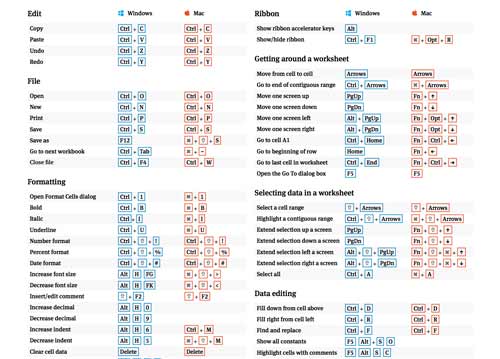

- #STUDENT COMMANDS FOR MAC CHEAT SHEET HOW TO#
- #STUDENT COMMANDS FOR MAC CHEAT SHEET CODE#
- #STUDENT COMMANDS FOR MAC CHEAT SHEET WINDOWS#
#STUDENT COMMANDS FOR MAC CHEAT SHEET HOW TO#
How to Program in C++ by Matt Mahoney (cs.fit.edu/~mmahoney/).C/C++ Cheat Sheet (For your reference this sheet will also be included in exams) (research.cs.queensu.ca).C/C++ Cheat Sheet (v1) by Jared Schiffman ().C++ Quick Reference Sheet (Cheat Sheet) ().For example, enter: telnet cheat sheets, round-ups, quick reference cards, quick reference guides and quick reference sheets in one page. With Telnet you’re also able to connect to active Bulletin Board Systems. You can send and receive files, send command and much more. Telnet – This is a command that can be used to connect to another computer, or manage a router or switch. It’s capable of displaying and configuring information regarding a computer’s networking setup. Netsh – This is a complex command that when entered will put you into a different shell, the Network Shell (netsh).
#STUDENT COMMANDS FOR MAC CHEAT SHEET WINDOWS#
You can get the MAC address of a windows computer by entering getmac. Some routers are able to limit connection to the network by only allowing user-entered MAC addresses in.
#STUDENT COMMANDS FOR MAC CHEAT SHEET CODE#
Getmac – Every network interface has a unique Media Access Code assigned to it. It will display the latency and packet loss between one computer and another (either locally or on the Internet), and after 300 seconds display a detailed report. Pathping – This is a handy command that combines the best elements of Ping and Tracert. This will print the network interfaces, IPv4 and IPv6 route tables. Route – The Windows Route command allows you to view the device’s routing tables. Nslookup – This tool can be used to look up the and diagnose the Domain Name System (DNS) of a location on the local network or Internet. Ipconfig will display information on the local computer’s network interfaces, such as IP addresses (both IPv4 and IPv6), Hostname, gateway and so on. Ipconfig – Probably one of the most used networking command in Windows. For example, entering tracert will display the hops taken over networking devices to get to one of the Google servers. Tracert – Stands for Trace Route will examine the path to a remote computer, either locally or on the Internet. Hostname – If you’re struggling to find the name of a Windows computer you’ve got on your network, simply enter the hostname command and it’ll display the computer’s local name. It’ll display the human-friendly names of devices on the network along with their IP addresses. Its primary design is to help troubleshoot NetBIOS name resolution problems. NbtStat – The nbtstat command is a diagnostic tool for NetBIOS over TCP/IP. Use netstat -e for interface stats.Īrp – Stands for Address Resolution Protocol displays and modifies entries in the ARP cache, which contains one or more tables that are used to store IP addresses and their resolved Ethernet or Token Ring physical addresses. Entering the command will display what’s going on while you use the network and Internet. Netstat – Stands for Network Statistics, this command will display connection information, routing tables and so on. With it you’re able to send an echo request to a device locally, or on the Internet, and receive a reply. Ping – Ping is probably the most familiar of networking command line tools.


 0 kommentar(er)
0 kommentar(er)
